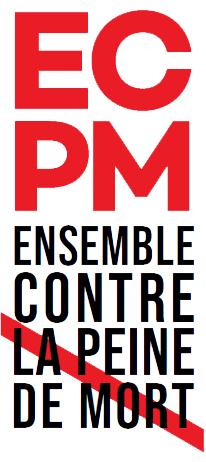This next decade will bring the embedded payment infrastructure to the forefront of the industry, spurred by recent world events like the COVID-19 pandemic. Also, loyalty is hugely important to companies offering both B2B and consumer services. Embedded payments and especially embedded payments can make a difference here. For example, offering a line of credit that can spent easily online is likely to keep B2B customer coming back. Winners are already emerging among the financial institutions that manufacture embedded finance.
The primary benefit in this model is that you gain a new revenue stream with little to no operational expense. The pandemic accelerated digital transformation, growing the market opportunity for modern payment providers like Plastiq that are enabling new forms of payment optionality that bridge gaps in the legacy payments ecosystem. These new systems enable platforms to expand the B2B payment options they offer to small and mid-sized customers through a set of bank-grade, secure Application Programming Interfaces .
Key decisions for embedded-finance market entrants
There are multiple benefits of embedded finance both in context of B2B and consumer scenarios. These will vary according to the precise method but the benefits listed below generally apply across all iterations of B2B and consumer embedded payments. Uber is often cited as an example of embedded payments in a consumer scenario. Unlike a traditional taxi journey, no cash or card transaction needs to be instigated by the customer at the end of the journey. Winners are already emerging in the race to provide banking and payments infrastructure for embedded finance, but incumbents and new entrants still have time to claim a share of this dynamic market.

Operating in over 50 countries and home to more than 43 nationalities, PayU is a leader in global payments and innovative fintech. Operating in over 50 countries and home to more than 43 nationalities, PayU is one of the world’s leaders in global payments and innovative fintech. The quickest path to success starts by working together to create a strategy to reach your ultimate goals. Strategic transition between models— Because you maintain ownership of your payments portfolio, you are able to make adjustments to your payments strategy at your own pace. Increased revenue share— Because you partner directly with the sponsor bank, you are able to collect more revenue for each sale.
Embedded Finance: What It Is And How To Get It Right
With the growth of banking as a service and open-access APIs, businesses now have the ability to leverage financial services technology to customize payment solutions for their needs. As the CEO of a company offering virtual cards, I’ve seen a number of companies streamline their employee procurement process, control what are embedded payments spending limits and easily track and reconcile charges without manually reviewing every purchase. By accessing the volume of users’ daily transactions and sales trends, platforms can offer embedded financial products tailored to their money flow and create an extra benefit for them to stay on the platform.
- For example, offering a line of credit that can spent easily online is likely to keep B2B customer coming back.
- Others, including Unit, Bond, and Alviere, operate platforms that offer distributors multiple financial products, such as deposits, money movement, and lending.
- Discover value-added payment services available via PayU, from industry-leading payment security and fraud protection to optimization features for getting the most out of your online payments.
- This model is costly, time-consuming for both your users and your platform.
- Embedded finance immediately enhances user experience and makes your business more profitable in return.
- According to Baymard Institute, 18% of consumers cite ‘a long and complicated checkout process’ as the main reason for cart abandonment.
One possibility is that banking as a service and API banking become as ubiquitous as online or mobile banking, a channel that every bank must build and maintain. In that world, achieving long-term differentiation with BaaS will be difficult, so banks will continue to distinguish themselves based on products, rates, reach, and other dimensions. Another possibility is that the market will be prone to returns to scale, much as cloud computing is dominated by big players. If this winner-take-all dynamic prevails, a few BaaS providers that are ahead of the pack in technology, analytics, and cost structure will likely form insurmountable advantages in the space. As more companies and ecosystems embed financial services in their offerings, banks should take the opportunity to decide on the role they will play in this model.
What Are Embedded Payments?
The examples below give just a sample of the variety of embedded financial products available in the consumer market. But the difference is that, the latter is when non-banking businesses provide services which only rely on using banks’ data . BaaS providers enable companies to offer valuable services to their customers without their customers knowing that a third party is involved.
This includes easily being able to open business bank accounts, access to the capital they need to grow, and branded business cards, directly through their platform. A few technology and balance sheet providers are building deep expertise in specific embedded-finance categories such as issuing, in order to claim outsize market share in these niches. They develop innovative use cases—such as just-in-time fund deposits into cards or crypto-linked payment authorization—as a basis for creating novel financial products for end customers. Over time, however, the demand for integrated financial solutions and the synergies that can be captured across product categories are likely to prompt these providers to protect their flanks with product breadth as well. The embedded payments industry is growing at a rapid pace, with revenues expected to grow from $43 billion in 2021 to $138 billion in 2026.
What is Nexio and why should I choose it over other models?
As these APIs provide easy integration of financial services into non-financial ones, they lower the entry barriers and create a source of revenue for embedded finance providers. Choosing the right embedded payments partner significantly reduces risk by alleviating many of the responsibilities. Good providers will take responsibility for handling compliance issues, updating software and providing clients with technical resources. Some partners can even help you and your clients facilitate payments globally. Consumers benefit from embedded payments as well, which is a further benefit for merchants. When customers are able to enjoy an embedded payment experience, they experience less friction in the process.
With embedded payments, software providers can completely control the experience, from designing the payments solution for their target industry to customer onboarding and ongoing support. By embedding payments with a third-party, software platforms also get a new revenue stream without all the work of creating the payment technology. According to JP Morgan, software providers that embed payments into their platform see up to a 5X increase in value per customer. Many distributors that are new to embedded finance are understandably concerned about how to build, sell, and service a financial product for end customers.
PayFac-as-a-Services
Digitization projects planned for years in advance were completed within months.

What setup your platform chooses, comes down to how much risk and responsibility you want to take on. Embedded payments for platforms are similar in the sense that payments become an integrated part of the user experience. Rather than referring platform users to third party payments partners, platforms can make payments a part of their product offering by embedding them into their service.
Which financial services can be embedded?
This not only makes it more likely they’ll complete the transaction, but it increases their satisfaction and loyalty. The first step is to check how many payments are currently being processed and how much that’s costing the company. No matter the location or industry, I believe any growing business processing https://www.globalcloudteam.com/ $50 million in monthly transactions should pursue embedded payments. The rates of third-party payment processors show this benchmark as the level at which fees paid out eclipse the cost of an embedded payment platform. This is by no means a top-down approach – businesses are responding to customer demands.
